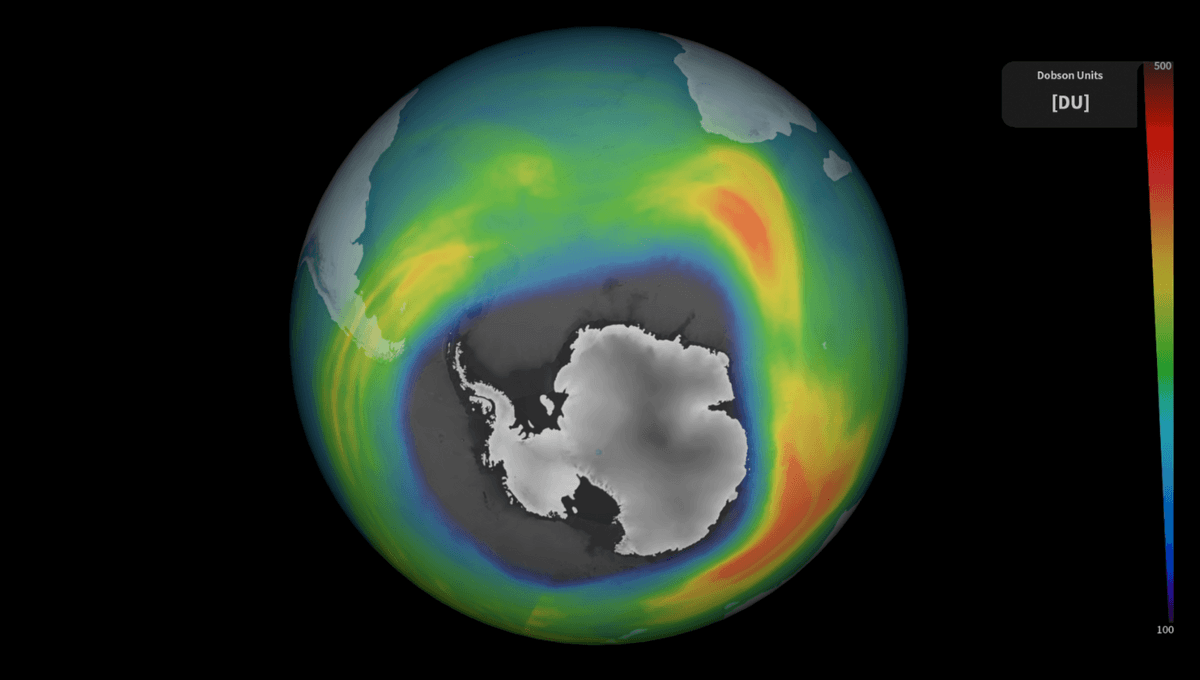
This year’s ozone hole over Antarctica has swelled to one of its biggest extents on record, encompassing an area roughly three times the size of Brazil. Scientists at the Copernicus Atmosphere Monitoring Service believe the exceptionally large patch of ozone depletion may have something to do with a colossal volcanic eruption that blasted a massive amount of water into Earth’s atmosphere last year.
New measures from the Copernicus Sentinel-5P satellite show that this year’s Antarctica’s ozone hole, known as the “ozone-depleting area” reached a size of 26 million square kilometers (10 million square miles) on 16 September, which is close to the record.
“Our operational ozone monitoring and forecasting service shows that the 2023 ozone hole got off to an early start and has grown rapidly since mid-August. It reached a size of over 26 million [square kilometers] on 16 September making it one of the biggest ozone holes on record,” Antje Inness, senior scientist at the Copernicus Atmosphere Monitoring Service, said in a statement.
Antarctica’s ozone hole regularly enters a state of flux, growing and shrinking in tune with the seasons. The ozone hole increases in size from August to October when the Southern Hemisphere enters spring and temperatures start to rise. It continues to grow until around mid-October when the temperatures warm to such an extent that the polar vortex weakens and finally breaks down.
As a wider trend, the hole in the ozone layer is actually shrinking in size and appears to be on track to totally recover within a few decades. This is largely thanks to the phase-out of chlorofluorocarbons (CFCs), human-made chemicals once widely used in aerosol sprays, solvents, and refrigerants that deplete the ozone layer when they slowly rise into the stratosphere.
So fear not; this spring’s surprisingly large hole is likely to be a blip that goes against the grain of a larger trend. The ESA believes it’s too early to speculate on the reasons behind the current state of the ozone hole, but some have suggested that this year’s unusual ozone patterns might have a link to the eruption of the Hunga Tonga-Hunga Ha’apai in January 2022.
The underwater eruption released energy equivalent to 20 megatons of TNT in five explosions, making it the largest natural explosion ever recorded. The blast pumped a significant amount of water vapor into Earth’s atmosphere, which may be having an impact on concentrations of ozone in the stratosphere.
“The eruption of the Hunga Tonga volcano in January 2022 injected a lot of water vapor into the stratosphere which only reached the south polar regions after the end of the 2022 ozone hole,” Inness explained.
“The water vapor could have led to the heightened formation of polar stratospheric clouds, where chlorofluorocarbons (CFCs) can react and accelerate ozone depletion. The presence of water vapor may also contribute to the cooling of the Antarctic stratosphere, further enhancing the formation of these polar stratospheric clouds and resulting in a more robust polar vortex,” they added.
Source Link: This Year's Ozone Hole Over Antarctica Is A Big Boy